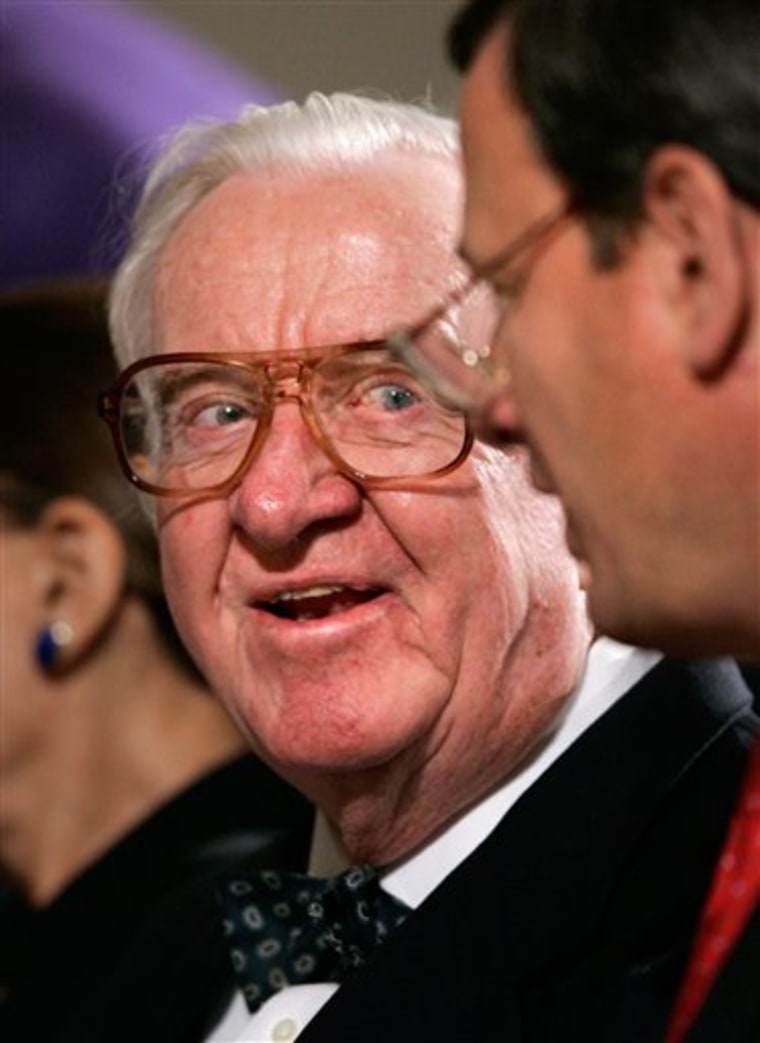This could be the Supreme Court term, one court watcher joked recently, that Justice John Paul Stevens remembers he is a Republican.
A 1975 appointee of President Gerald Ford, Stevens is regarded as the anchor of the court's liberal wing. But he has joined with his more conservative colleagues in three high-profile cases that defied predictions they would showcase deep ideological divisions on the court.
Last term was marked by an unusually high number of 5-4 decisions, and many experts believed this term's notable cases would produce similar outcomes.
But the biggest cases decided so far — upholding lethal injection procedures, photo identification requirements for voters and Texas' treatment of a Mexican on death row — have had six or seven justices, including Stevens, in agreement on the outcome.
Just one case has been decided by a 5-4 vote. Two others split 4-4 with a justice not participating. Another was 5-3.
Taking stock of the court with half its decisions still to come is a bit like wrapping up a sporting event at halftime. So far, however, Stevens' voting pattern and the lack of 5-4 decisions stand out.
About a dozen cases to decide
With roughly three dozen cases left to decide — including the rights of foreigners detained at Guantanamo, Washington's handgun ban and the death penalty for raping a child — the court has plenty of time to revert to its recent pattern of ideological division and Stevens could end up breaking with the conservatives frequently.
Still, at this point last year, disputes involving abortion and global warming had been resolved in 5-4 divisions with the conservatives in the majority in the former and the liberal justices holding sway in the latter.
University of Oklahoma law professor and former Stevens clerk Joseph Thai said he has begun to wonder whether his former boss is "tacking back a little bit toward the center."
Stevens wrote the lead opinion in the voter ID case, rejecting a constitutional challenge to a photo ID law in Indiana because there was lack of evidence to support the claim that voters were being unfairly denied a ballot. On the other side, there was scant evidence of the sort of voter fraud the sponsors of the law said it was designed to prevent.
And, while Stevens acknowledged that there was a Republican partisan motivation behind the law, it did not single out any group for harsher treatment.
'He surprises people'
Thai said it is more likely that Stevens is simply showing that he remains the somewhat unpredictable justice he has been in more than 32 years on the court. "He is called the leader of the liberal wing, but people pigeonhole him too readily," Thai said. "He surprises people."
Stevens' position in the lethal injection case illustrates Thai's point. He voted against the Kentucky death row inmates who challenged the state's execution procedures.
But Stevens did not join Chief Justice John Roberts' opinion. Instead, he wrote separately to declare that he now views the death penalty as unconstitutional and said the court should squarely confront the issue.
The lethal injection case was similar to the challenge to voter identification requirements that the court also turned down last month in that neither case produced a majority opinion of the court.
Supreme Court cases are important not just to those involved in the dispute before the court, but to other similarly situated parties and judges who look to the court for guidance.
"In these key cases, they have not given lower courts, legislators or lawyers a clear sense of what is the rule of law to be followed and applied," said Erwin Chemerinsky, a Duke University law professor.
Roberts has spoken of his desire to have the court decide cases narrowly, but clearly. Chemerinsky said the absence of those kinds of outcomes is not a criticism of the chief justice, but a recognition that he is one of nine strong personalities.
Last term, the liberal justices were vocal in their frustration with the outcomes of the big cases. Stevens and Justices Stephen Breyer, Ruth Bader Ginsburg and David Souter each read at least one dissent from the bench — a practice that usually happens once or twice a term for the entire court.
No one has read a dissent yet, although that too could change as the term nears its end.
"I wouldn't be surprised that if a lot of what remains on the docket comes down 5-4," Chemerinsky said.
